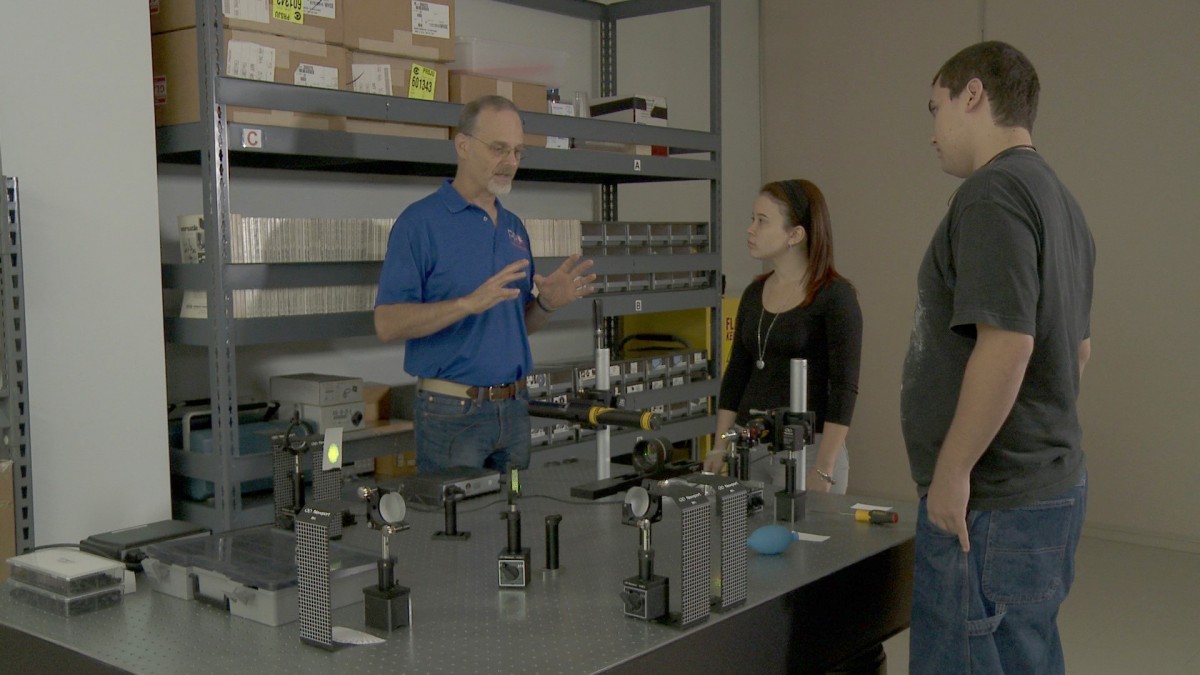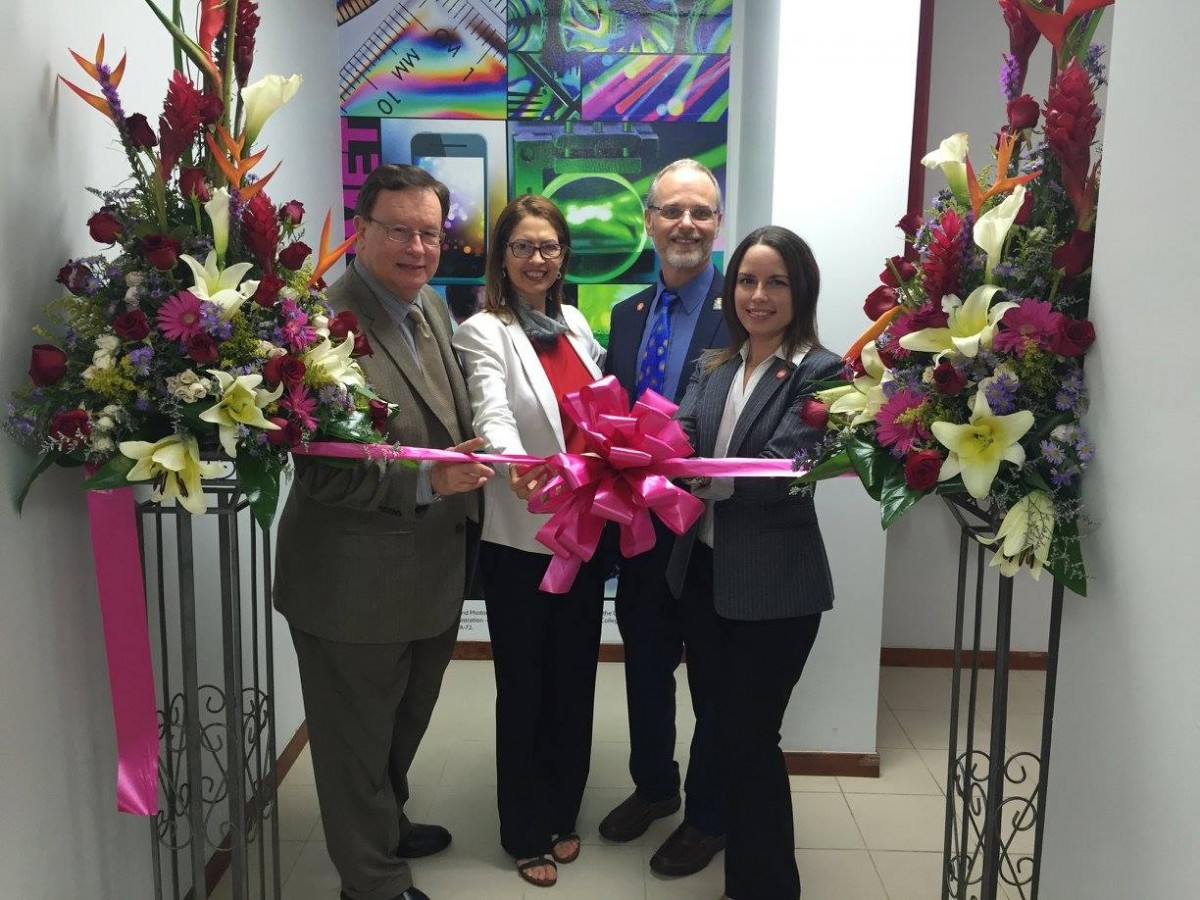Illuminating science: Promoting the field of photonics in Puerto Rico
Submitted by Luis Cedeno on
For one thousand years, we humans have been fascinated by light and by harnessing its power to develop new technologies. Light and optics are the basis of some the most important technologies of our time—from lasers, to fiber optics and telecommunications; from technologies to explore the cosmos, to applications to explore the world on a microscopic or even nanoscopic scale. In honor of such an important area of research and knowledge, the year 2015 was proclaimed by the United Nations as the International Year of Light and Light-based Technologies (IYL). In Puerto Rico, celebrations for the IYL were led by Dr. Jonathan Friedman, an expert in the physics of light and a champion for Puerto Rico as a destination for the training of students and development of new technologies in the area of photonics, the manipulation of photons of light and energy for science, engineering and technology applications.
Dr. Friedman has always been passionate about science. As an undergraduate studying Physics at Cornell University, he was recruited to help one of his professors, Dr. Louis Hand, to re-develop an undergraduate optical laboratory. This opportunity and the excitement and camaraderie he experienced working in the photonics laboratory, sparked his interest in lasers, optics and photonics and inspired him to pursue a PhD in Physics at Colorado State University.
As a graduate student at Colorado State University, Dr. Friedman worked with Dr. Chiao-Yao She (also known as Joe She). In his lab, Jonathan was free to explore his fascination with light; how we can manipulate it and use it to better understand molecules and how they interact with the world. By using lasers and optical techniques such as Raman spectroscopy, a technique that uses light to observe how molecules vibrate or rotate under different conditions, Jonathan was able to show that the molecules of different pure liquids all behave in the same way.
Interestingly, after spending most of his graduate studies understanding microscopic chemical interactions, Dr. Friedman’s next step was to apply his knowledge of physics and optics to study our atmosphere and to look towards space. In 1992, Dr. Friedman received an offer from Cornell University to work at the Arecibo Observatory Space and Atmospheric Sciences group. His work in this group focuses on the study of the upper mesosphere, the least understood part of the Earth’s atmosphere, using LIDAR, a remote sensing technology that measures distance by illuminating a target with a laser and analyzing the reflected or scattered light. After management of the Arecibo Observatory changed in 2011 from Cornell University to the current consortium led by SRI International and including Puerto Rico's Universidad Metropolitana, Dr. Friedman split his time between the two organizations, continuing his research at Arecibo and launching PRPI at UMET.

Dr. Jonathan Friedman with his students Yesenia and Jesús with a Michelson inferometer. Photo courtesy of Dr. Friedman.
Presently, Dr. Jonathan Friedman is the Director of the Puerto Rico Photonics Institute (PRPI), a program of the School of Environmental Affairs in the UMET that he launched in 2010. The PRPI is the first and only program in Puerto Rico dedicated to research and education in the field of photonics, with a focus on the physics of remote sensing for atmospheric and space applications. As Director of PRPI, Dr. Friedman leads various research and development projects and has started educational programs in optics and photonics, including a 1 year certificate in photonics and lasers.
Dr. Friedman is also an accomplished scientist. His group was the first to observe a descending layer of potassium atoms at a height of 150 km in the atmosphere, a phenomenon that could be due to periodic oscillations in the atmosphere known as atmospheric tides. In addition, Dr. Friedman developed a technique to measure molecular vapor by looking at different color matches that can behave like an artificial star. This technique helped to study the movement and dynamics of metal atoms in the atmosphere. Dr. Friedman has published his findings in prestigious scientific journals such as the Journal of Geophysical Research-Atmospheres, the Journal of Atmospheric and Solar-Terrestrial Physics, the Atmospheric Chemistry and Physics Journal, and in the Journal of the Optical Society of America. As an expert in high-resolution LIDAR measurements of the spectral characteristics of mesospheric metals, he has been awarded several grants from the National Science Foundation (NSF) and the Puerto Rico Science, Technology, and Research Trust.
As a leader in Puerto Rico in the fields of optics and photonics, Dr. Friedman took advantage of the worldwide celebration of the IYL to help increase awareness of the importance of light and its applications in Puerto Rico. Throughout the year, Friedman and his colleagues coordinated workshops for teachers and students, school visits, demonstrations and exhibitions. Last month, from November 5-7, 2015, Dr. Friedman and his colleagues culminated the International Year of Light Celebrations in Puerto Rico with a symposium entitled Photonics, Medicine and the Environment; an open house of the Puerto Rico Photonics Institute (PRPI); and a spectacular Concert of Light by the Puerto Rico Symphony Orchestra featuring Puerto Rican astronomer and science photographer Dr. Jose Francisco-Salgado and a mix of music, science and visual art effects.
Dr. Jonathan Friedman is a successful scientist that really loves and enjoys teaching. For him, teaching is rewarding because it motivates him to understand in more detail and more deeply topics on which he might not necessarily be working. For more than 23 years, his students have been his inspiration. Over the years, Dr. Friedman has trained five PhD students, ten MS students and more than thirty-five summer research and undergraduate students. One of the things he enjoys the most of his career is getting to work with a group of people that have a common goal. This provides opportunities to share and obtain more knowledge, experiences, and ideas from colleagues and students.

Inauguration of the Institue of Photonics. Photo courtesy of Dr. Greetchen Díaz.
When asked to describe his career in word Dr. Friedman said, “fulfilling”. And when we asked him to name his scientific hero, he said it is his Ph.D. thesis advisor, Dr. Chiao-Yao She. “Dr. She taught me that you don’t need to have a famous career to love science. Your love and enjoyment of science comes from helping others,” he said
Although Dr. Friedman’s career has been full of accomplishments, there have also been difficulties. When asked about what he has learned from them, Dr. Friedman mentions jokingly that Will Rogers once said, “Good judgment comes from experience, and a lot of that comes from bad judgment”. Jonathan says that his decisions, good and bad, have helped him grow and become wiser.
Dr. Friedman shared a little bit of that wisdom, for students interested in pursuing a career in science. “You only live once, pursue what inspires you, and do not be discouraged by frustration”.
If you want to learn more about Dr. Jonathan Friedman or if you wish to contact him, visit his CienciaPR profile.









